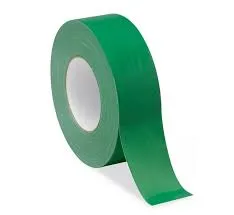Understanding Car Wire Harness Wrap Importance and Applications
In the automotive industry, the safe and efficient functioning of a vehicle heavily relies on its electrical system. One of the key components of this system is the wire harness, which bundles together all the electrical wires needed to operate various functions of the car. However, to ensure longevity and performance, a significant aspect that often gets overlooked is the wrapping of these wire harnesses. This article delves into the importance and applications of car wire harness wrap, as well as the materials used and best practices for installation.
What Is a Wire Harness?
Before discussing wire harness wrap, it’s essential to understand what a wire harness is. A wire harness is a collection of wires, terminals, and connectors that transmit electrical power and data throughout a vehicle. These harnesses are engineered to provide a reliable means of conducting electricity while serving to protect wiring from environmental hazards, wear, and tear.
Why Use Wire Harness Wrap?
1. Protection Against Wear and Tear One of the primary functions of wire harness wrap is to protect the wires from abrasion, cuts, and damage caused by external elements. As vehicles are exposed to various harsh conditions, including heat, moisture, and physical impacts, wrapping the harness can significantly extend its lifespan.
2. Electrical Insulation Wire harness wraps are often made of materials that provide electrical insulation, which can help prevent short circuits. By ensuring that wires are insulated adequately, it minimizes the risk of electrical failures that could lead to costly repairs or hazardous situations.
3. Vibration Dampening Cars experience constant vibrations while operating. These vibrations can cause wires to rub against each other or other surfaces, leading to fraying and eventual failure. A proper wrap can help dampen these vibrations, maintaining the integrity of the harness.
4. Aesthetic Appeal Beyond functionality, wiring harness wraps can also improve the appearance of a vehicle’s engine compartment. A neat and organized wrap can enhance the overall look, making complex systems appear well-managed and professional.
5. Heat Resistance In some areas of the car, particularly near the engine, temperatures can rise significantly. Specialized wire harness wraps made from heat-resistant materials can protect against overheating and melting, ensuring that the electrical system operates smoothly.
Types of Wire Harness Wraps
1. Electrical Tape A common option that is easy to use and widely available. It provides decent insulation and is typically water-resistant but can degrade over time.
car wire harness wrap

2. Heat Shrink Tubing This offers excellent protection against environmental conditions and is used in areas where a tight fit is required. When heated, it shrinks to provide a secure insulation seal.
3. Spiral Wrap A flexible and durable solution that provides protection against abrasion while remaining lightweight. This is often used for applications where flexibility is vital.
4. Fabric Wraps Often made from cotton or other fibers, these provide a retro look while offering basic protection. They are less common in modern vehicles but can be found in vintage models.
5. Polyethylene Wrap A plastic option that is effective in shielding wires from moisture and dirt. It’s versatile and can be used in various applications across a vehicle.
Best Practices for Installation
1. Clean Surface Before applying any wrap, ensure the wire harness is clean and dry. This will promote better adhesion and ensure the wrap stays in place over time.
2. Choose the Right Material Depending on the area of the car and exposure to elements, select the appropriate type of wrap. High-temperature areas may require specialized materials.
3. Overlap and Tension When wrapping, overlap the material slightly and maintain consistent tension. This ensures comprehensive coverage and protection.
4. Secure the Ends Use appropriate fasteners or adhesive to keep the ends of the wrap secure. This prevents unraveling and ensures that moisture and dirt do not penetrate the wrap.
5. Periodic Inspection Regularly inspect the wire harness wrap for signs of wear or damage. Early detection of issues can save time and money in repairs.
Conclusion
Wrapping car wire harnesses is a critical aspect of vehicle maintenance and performance. Not only does it provide essential protection for the intricate systems that power modern vehicles, but it also enhances safety and overall aesthetic appeal. By understanding the types of wraps available and following best practices for installation, vehicle owners can ensure that their wiring systems remain in optimal condition for years to come.
-
XIANGFAN Rubber Tape-Ultimate Solutions for All Your Insulation NeedsNewsJun.24,2025
-
XIANGFAN Rubber Tape-Protection for Industrial and Residential ApplicationsNewsJun.24,2025
-
XIANGFAN Rubber Tape: Superior Safety and Sealing for Demanding EnvironmentsNewsJun.24,2025
-
XIANGFAN Rubber Tape: Reliable Solutions for Every Electrical ChallengeNewsJun.24,2025
-
XIANGFAN Electrical & Industrial Tape: Powering Reliability Across IndustriesNewsJun.24,2025
-
XIANGFAN Electrical & Industrial Tape: Excellence in Every ApplicationNewsJun.24,2025
